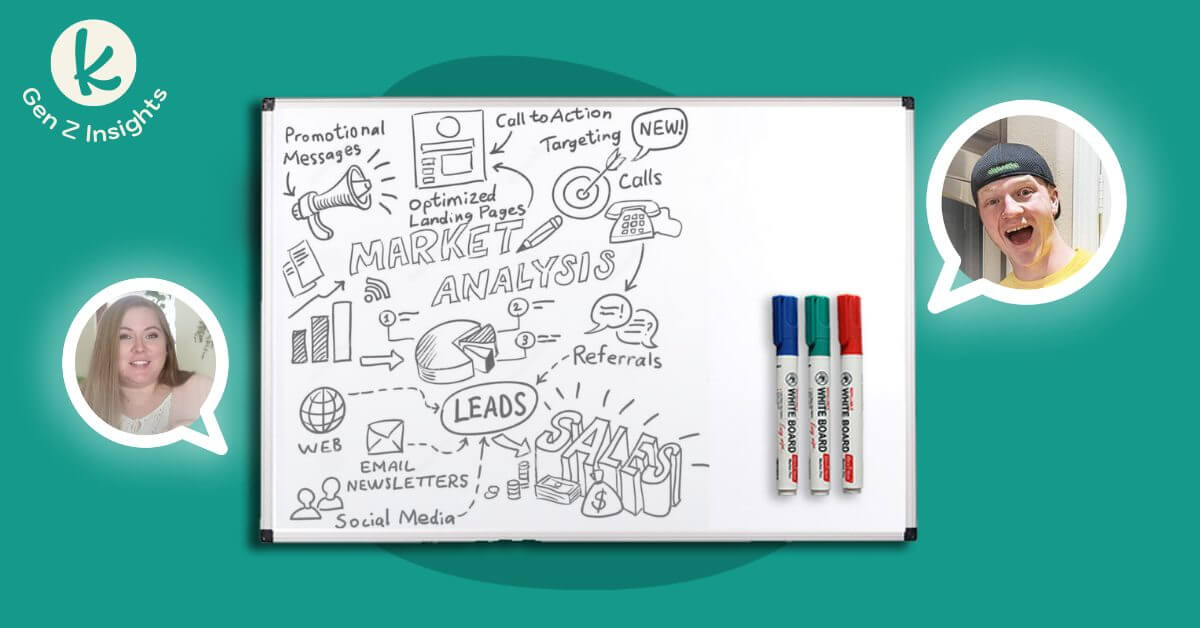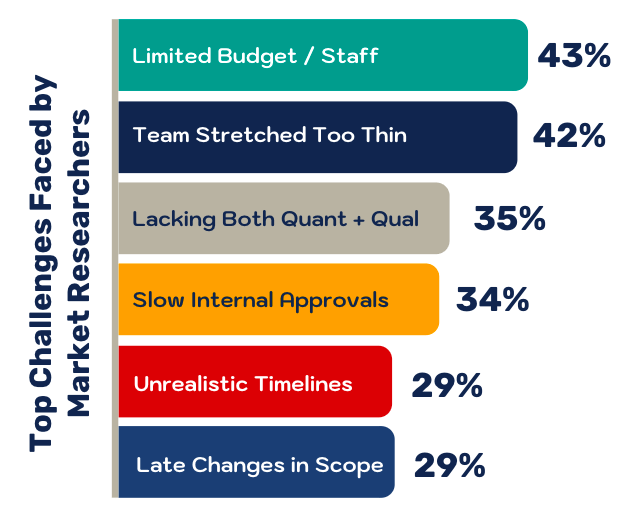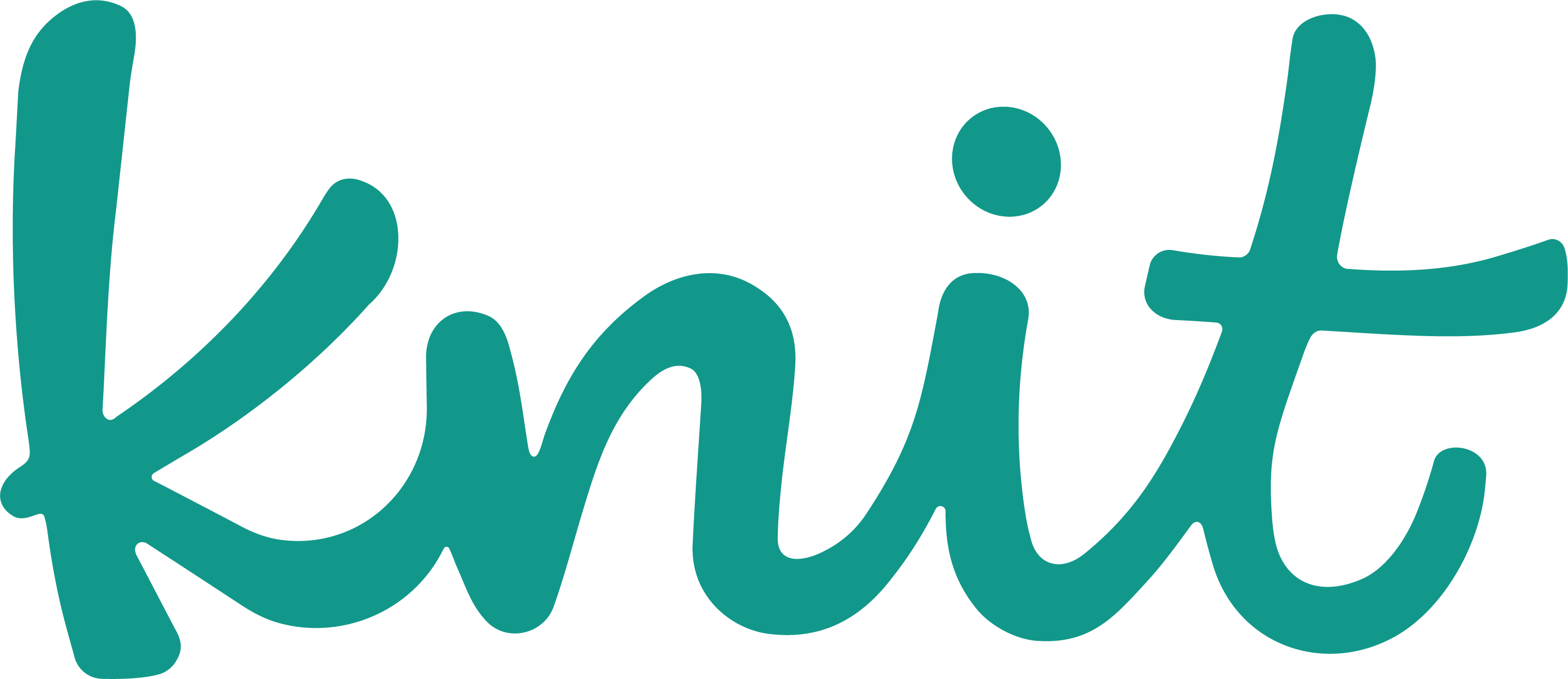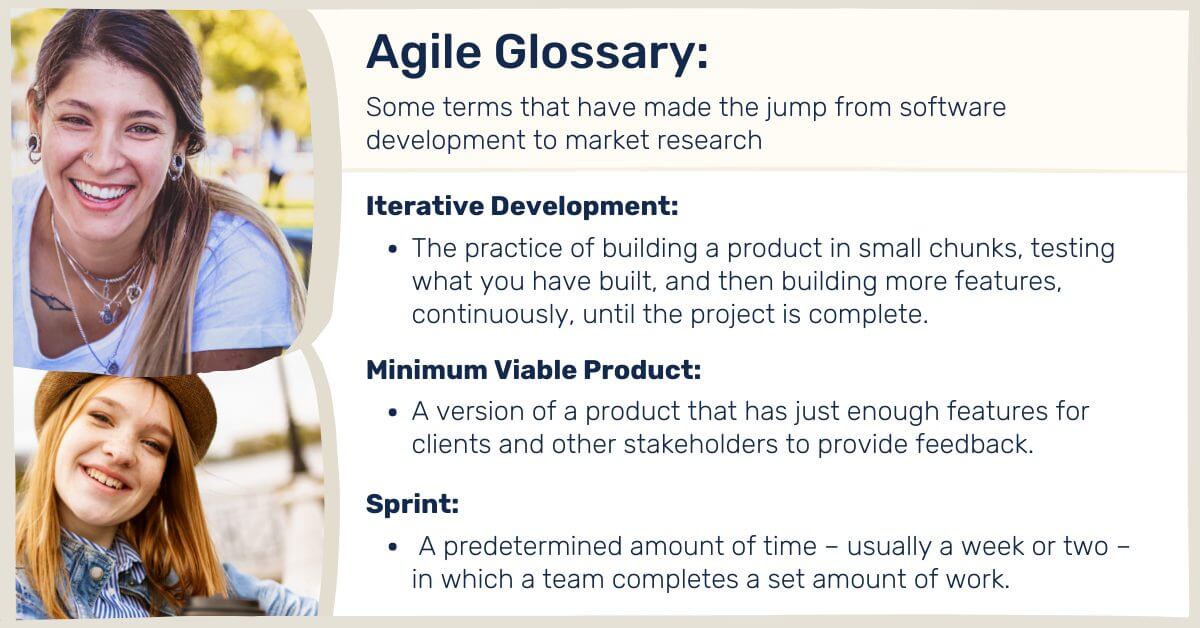
Agile Market Research:
The great equalizer of enterprises & challenger start-ups
And with the widespread availability of these technologies, customers have become accustomed to a much higher degree of personalization and experience. In many of these industries, consumers expect rapid (even instantaneous) delivery of new products. And it’s no surprise that customer experience, in itself, is more important than ever; Forbes estimates that companies which focus on a high quality customer experience can see more than 5 times the revenue of their competitors.
Obviously, market research is key to building superior products and customer experiences. By more accurately understanding who your customers are, you can better serve their needs and guide them through a seamless, delightful experience. Unfortunately, traditional methods of market research are not always sufficient for this purpose.
A recent survey of nearly 150 “insights pros” highlights some of the greatest challenges facing market research departments in 2021:
- 43% report not having enough budget or staff.
- 42% believe their team is stretched too thin.
- 35% say it is hard to get both the numbers and stories needed to inform internal decision making.
- 34% complained about slow internal approval processes for vendors.
- 29% are given unrealistic timelines.
- 29% face changes in scope after already starting a project.

One way that researchers and insight professionals are accomplishing this is by adopting an agile research methodology. Adapted from similar advances in software development workflows, the agile methodology – when properly implemented – can streamline the flexibility and efficiency of a research team. Read on to learn more about the agile methodology, the ways that it can boost productivity, and how to best integrate it into your own organization.
What is Agile Research?
Despite its name, agile is not just a fancy word for any research that is done quickly or dynamically. Rather, the term refers to a specific method of market research that borrows “agile” concepts from software development, such as iterative development, sprints, and minimum viable products.
By employing these tactics – which help developers break down complex products into manageable chunks – market researchers are able to deliver more insights – more quickly and more focused. There is less of a focus on ultra-lengthy months-long reports, and more focus on delivering “faster and more focused projects as often as needed to support marketing and product development efforts,” says Morgan Molnar from SurveyMonkey.
A recent Qualtrics report puts it even better: “At its core, agile methodology focuses less on delivering the perfect final product and more on producing incremental value for customers by creating a continuous stream of innovation.”
Study quantity cannot be the only measure of strong research, of course. The trick is to streamline the efficiency of your team using agile while simultaneously creating reports, customer personas, and other insights that are more effective than those created with a more traditional qualitative/quantitative strategy.
To solve this challenge, companies in the insights space (Knit included) have introduced a number of new dashboards, survey engines, and other tools that are designed specifically for agile. These tools, many of them powered by Artificial Intelligence, are able to return quick results from targeted audiences, and can be constantly and rapidly deployed throughout the research process.
In this way, as hypotheses and questions evolve, new results can be quickly integrated into a kind of “living” research product. Rather than spending months working on a single static report, agile researchers can consistently deliver insights that are responsive, flexible, and hyper-focused on specific questions.
When employing the agile research methodology, it is important to avoid some common pitfalls. Perhaps the most dangerous is substituting raw speed for actual agility. It is one thing to move as quickly as possible in a single direction; significantly more difficult is being able to maneuver hurdles and switch up direction without faltering.
Say a survey is found to be less than ideal part of the way through the research process. Using dashboards that deliver real time results, an agile team could switch questions or add new participants at a moment’s notice, integrating the new findings into their research in real time. When successfully using agile research methodology, teams will no longer make it 90% of the way through research before discovering a fundamental issue. Problems are identified quickly, and adaptation and repositioning is an expected part of the process.
Success Stories.
It is one thing to preach the hypothetical benefits of agile research. But are companies actually finding success abandoning traditional qualitative/quantitative research for the agile methodology? Indeed they are. As the digital economy has elevated the importance of lightning-fast product development and hyper-curated customer experiences, many companies have found agile research gives them a winning edge. A few are listed here, but every day more companies are discovering the benefits of agile.
National Public Radio: NPR faced a problem funneling money and resources into developing radio programs that failed to attract an audience. In the late 2000s, the failure and cancelation of an ambitious new program called “The Bryant Park Product” (with a development price tag of $2 million) demonstrated to the organization that they needed to rethink their development process. Now, by implementing agile strategies, NPR has managed to cut down the cost and time commitment to develop new programming. Pilots are produced quickly and cheaply, then released in a limited “beta” format, allowing audience feedback to determine the future direction of the program. In this way, shows that do fail are a less expensive loss; those that survive are successful because they are highly responsive to their target audience, showcasing the advantage of agile in developing a superior customer experience.
John Deere: Starting with their IT department but expanding across the broader organization, the iconic tractor manufacturer John Deere has adopted an agile strategy top to bottom. After seeing success with agile in software development, the company worked to train non-developers in the methodology, turning hundreds of employees into agile evangelists. The company devised a special set of agile principles known as “XI” – Extreme Innovation – and began to use them when developing new products. John Deere executives cite a rise in customer satisfaction since implementing agile, and prototype development has sped up by 75%.
Riff Cold Brew: Nearing an upcoming rebrand and packaging redesign, the team at Riff, a growing natural energy drink, conducted rapid qualitative concept testing within their identified target segment of 18-24 year olds. The goal was to uncover how Gen Z currently perceives the Riff brand and the natural energy sector, as well as define the segment’s preferences for the brand’s new packaging concepts. Initial leanings towards rebranding and packaging were proven wrong and the team quickly pivoted (with the help of follow up focus groups) to land on a new design – unveiled just weeks after initial testing.
Going All In On Agile.
We’ve repeatedly stressed in this article the advantages of an agile research methodology, especially when attempting to better reach your target audience with a curated customer experience. Simply put, when properly implemented, agile can deliver faster and more responsive research than other, more traditional methods.
It does so by borrowing best practices from software development, in particular a focus on iterative development and quick, consistent feedback loops. In this way, it fits in with the larger “Lean Startup Methodology,” a business approach developed by Eric Ries which promotes fast, sustainable growth through a constant process of testing and reevaluation. Both of these ideas are adaptations for a rapidly changing business landscape, one in which you can no longer compromise on either speed or quality.
And beyond traditional uses between research & product teams, we’ve seen agile research adopted heavily by marketing departments who lean into the tactics to quickly ideate and concept test campaigns, creative, content and more before investing heavily with consumers. By investing in agile tools especially those that allow for quick Quant + Qual analysis (hint hint – that’s us), and taking the time to train your team on agile, organizations large and small can enter the future better prepared.

Subscribe for industry insights delivered weekly.
Get all the Knit News you need with access to our free newsletter to stay a step ahead on the latest trends driving the industries of tomorrow.


